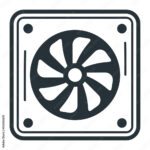TOP UP ENGINE COOLANT
How to Top Up Engine Coolant with Castroil
Introduction
Maintaining the proper level of engine coolant is crucial for keeping your engine running at optimal temperature and preventing overheating. Castroil offers high-quality engine coolant products designed to provide efficient cooling and protection for your vehicle’s engine. This guide outlines the steps to top up your engine coolant using Castroil coolant.
Why Top Up Engine Coolant is Important
- Prevents Overheating: Coolant absorbs heat from the engine and dissipates it, preventing overheating.
- Maintains Engine Efficiency: Proper coolant levels ensure the engine operates at the optimal temperature for efficiency.
- Protects Against Corrosion: Coolant contains additives that protect the cooling system from corrosion and rust.
What You’ll Need
- Castroil Engine Coolant: Choose the appropriate Castroil coolant for your vehicle (e.g., Castroil Radicool Concentrate).
- Distilled Water: If using a concentrated coolant that requires dilution.
- Funnel: To pour coolant into the radiator or coolant reservoir.
- Owner’s Manual: For specific coolant type recommendations and instructions.
- Gloves: To protect your hands from coolant.
Steps to Top Up Engine Coolant
-
Park on a Level Surface
- Safety First: Park your vehicle on a flat, level surface and turn off the engine. Allow the engine to cool down before opening the coolant system.
-
Locate the Coolant Reservoir or Radiator Cap
- Reservoir: Many modern vehicles have a coolant reservoir that is easily accessible. It is typically translucent and labeled with “Coolant” or “Antifreeze.”
- Radiator Cap: Some vehicles have a radiator cap directly on the radiator. Exercise caution when opening the radiator cap, as it may be hot.
-
Check Coolant Level
- Reservoir: If your vehicle has a coolant reservoir, check the coolant level by looking at the markings on the side of the reservoir. The coolant level should be between the “Min” and “Max” marks.
- Radiator: If your vehicle has a radiator cap, check the coolant level by removing the cap (only when the engine is cool) and looking inside the radiator. The coolant should be near the top of the radiator neck.
-
Prepare Castrol Engine Coolant
- Dilution (if necessary): If using a concentrated coolant, dilute it according to the manufacturer’s instructions. Typically, this involves mixing one part coolant with one part distilled water.
- Shake the Bottle: Shake the Castroil coolant bottle well before pouring to ensure uniform mixing of additives.
-
Top Up Coolant
- Reservoir: If the coolant level is low in the reservoir, add Castroil engine coolant directly to the reservoir until it reaches the “Max” mark. Use a funnel to avoid spills.
- Radiator: If the coolant level is low in the radiator, carefully pour Castroil engine coolant into the radiator until it reaches the top of the radiator neck. Be cautious not to overfill.
-
Replace Reservoir Cap or Radiator Cap
- Reservoir: Securely replace the reservoir cap.
- Radiator: Carefully reinstall the radiator cap and ensure it is tightened properly.
-
Start the Engine
- Start the engine and let it run for a few minutes to allow the coolant to circulate through the system.
-
Check for Leaks
- After the engine has run for a few minutes, inspect around the coolant reservoir and radiator for any signs of leaks.
-
Final Check
- Recheck Coolant Level: Once the engine has cooled down again, recheck the coolant level to ensure it remains within the recommended range.
Choosing the Right Castrol Engine Coolant
- Castroil Radicool Concentrate: Provides long-lasting protection against freezing, boiling, and corrosion, suitable for a wide range of vehicles.
Benefits of Using Castroil Engine Coolant
- Superior Cooling Performance: Castroil coolant is formulated to provide efficient heat transfer and maintain engine temperature stability.
- Corrosion Protection: Contains corrosion inhibitors that protect the entire cooling system, including aluminum components, from rust and corrosion.
- Extended Service Life: Offers long-lasting protection and performance, reducing the frequency of coolant changes.
Conclusion
Maintaining the proper level of engine coolant is essential for keeping your engine running smoothly and preventing overheating. By using high-quality Castroil engine coolant and following these steps, you can ensure your engine remains cool and protected, providing reliable performance for miles to come.
For more information on Castroil engine coolant and cooling system maintenance tips, visit Castroil’s Website or contact:
Castroil Customer Service
[Address]
[City, State, ZIP Code]
[Email Address]
[Phone Number]
Trust Castroil to provide the cooling system protection your vehicle needs for reliable performance in any driving conditions.


 OUR BRANDS
OUR BRANDS CASTROIL DIFFERENTIALS AND AXLE FLUIDS
CASTROIL DIFFERENTIALS AND AXLE FLUIDS SERVICES
SERVICES

 CAR MAINTENANCE
CAR MAINTENANCE HOW OFTEN TO CHECK ENGINE OIL
HOW OFTEN TO CHECK ENGINE OIL TOP UP CAR ENGINE OIL
TOP UP CAR ENGINE OIL CHANGE BRAKE FLUID
CHANGE BRAKE FLUID FIX CAR RADIATOR LEAK
FIX CAR RADIATOR LEAK TOP UP ENGINE COOLANT
TOP UP ENGINE COOLANT WHY CHANGE BRAKE FLUID
WHY CHANGE BRAKE FLUID


